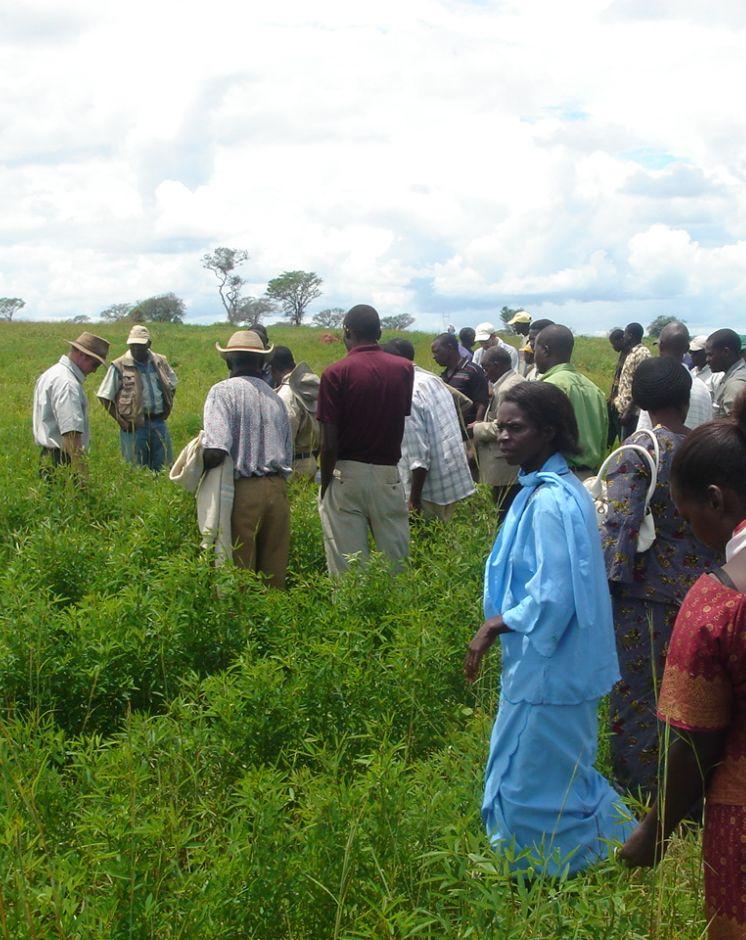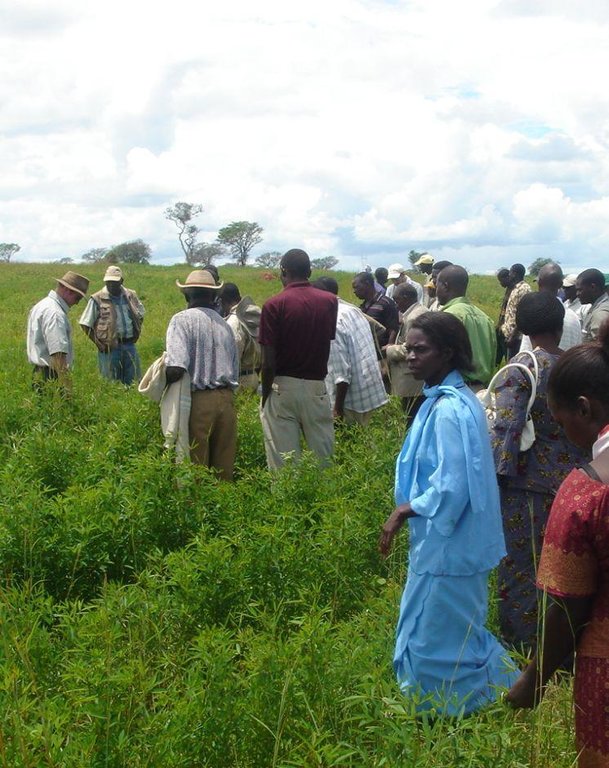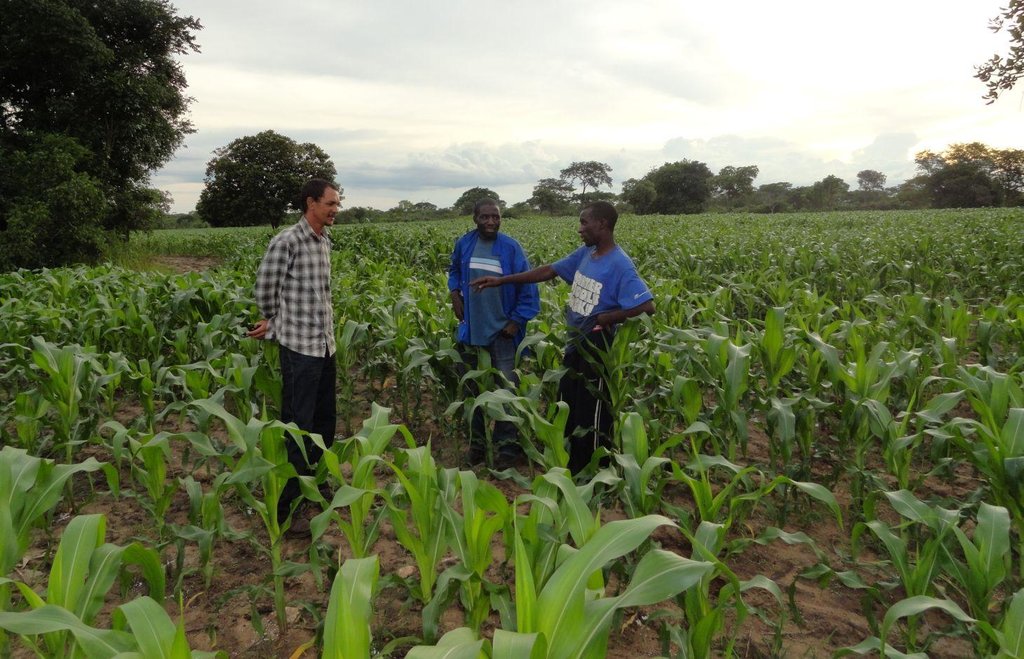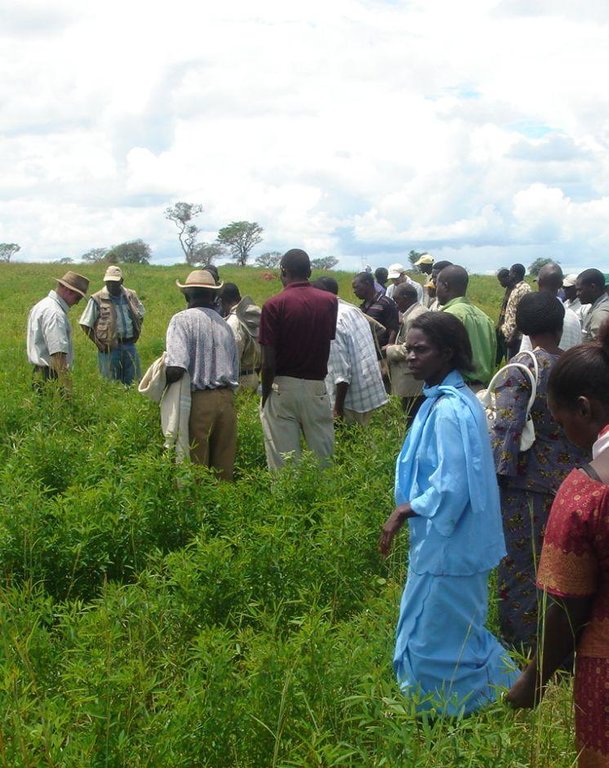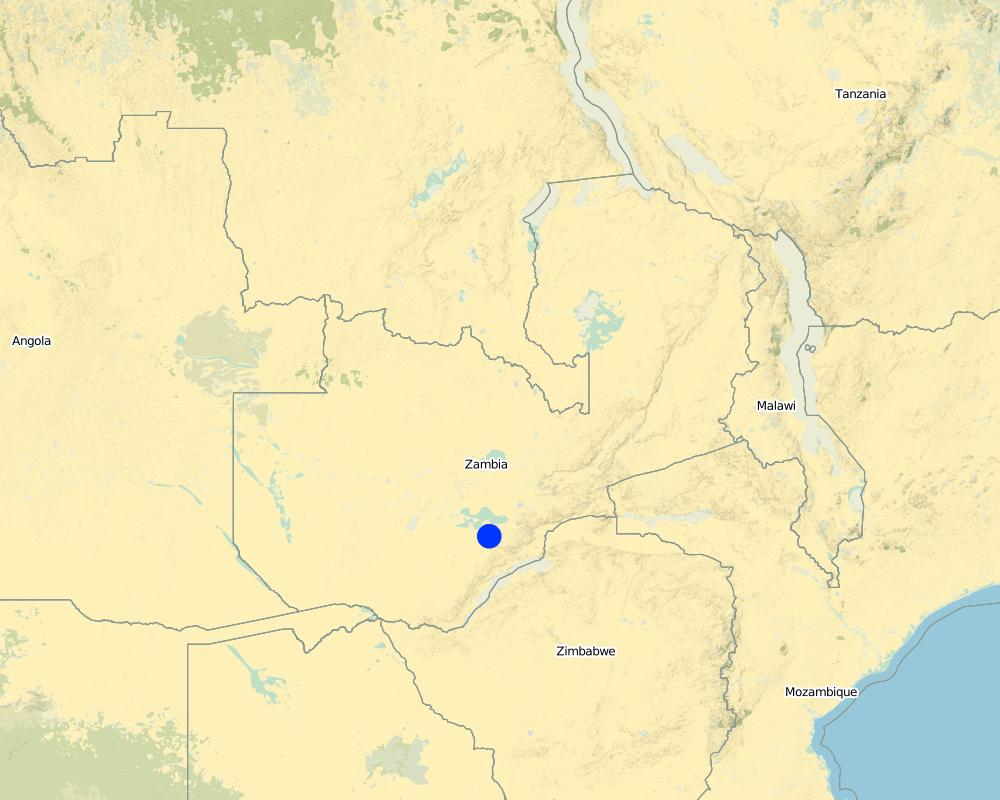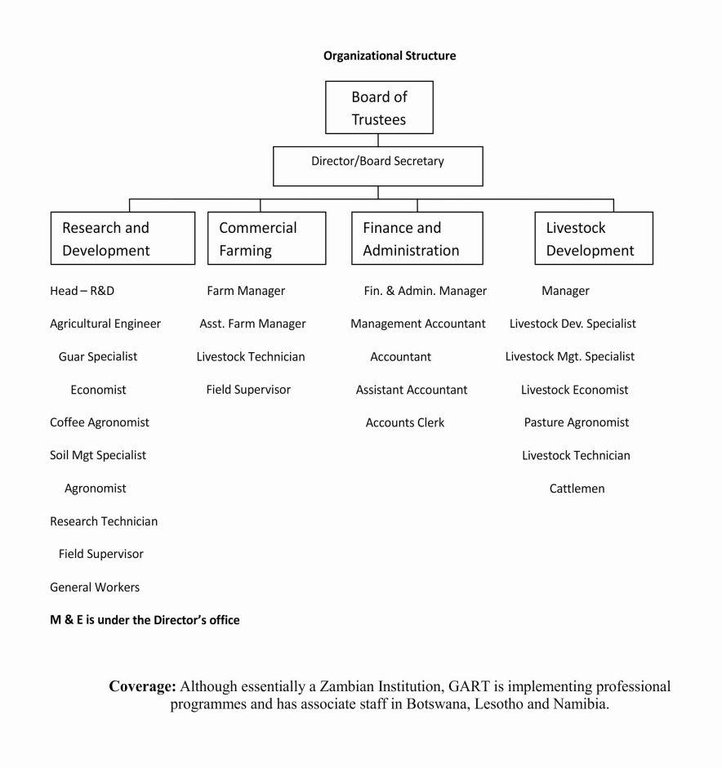Participatory Research and Development [赞比亚]
- 创建:
- 更新:
- 编制者: Arthur Chomba
- 编辑者: –
- 审查者: Fabian Ottiger
on-farm research
approaches_2464 - 赞比亚
查看章节
全部展开 全部收起1. 一般信息
1.2 参与方法评估和文件编制的资源人员和机构的联系方式
SLM专业人员:
Ndandula Sharon
Gart
赞比亚
SLM专业人员:
Katoweji Alfred
GART
赞比亚
SLM专业人员:
Chingulu Sylvester
Ministry of Agriculture
赞比亚
SLM专业人员:
Wamunyima Silenga
+260 97 7490657
wamzysilenga@rocketmail.com
GART
赞比亚
有助于对方法进行记录/评估的机构名称(如相关)
Golden Valley agricultural research trust (Golden Valley agricultural research trust) - 赞比亚有助于对方法进行记录/评估的机构名称(如相关)
Ministry of Agriculture of Zambia (MoA) - 赞比亚1.3 关于使用通过WOCAT记录的数据的条件
(现场)数据是什么时候汇编的?:
16/01/2013
编制者和关键资源人员接受有关使用通过WOCAT记录数据的条件。:
是
1.4 SLM技术问卷的参考

Animal Draft Zero-Tillage [赞比亚]
Animal draft zero-till involves the use of an animal drawn mechanical planter to plant directly in untilled soil to minimize soil disturbance and leave a cover of crop residues to conserve the soil and water.
- 编制者: Silenga Wamunyima

Strip Tillage Conservation Farming [赞比亚]
Strip Tillage Conservation Farming is an animal draft reduced tillage method that involves loosening a strip of soil with a strip tillage tool so as to reduce soil disturbance and improve soil and water conservation.
- 编制者: Silenga Wamunyima
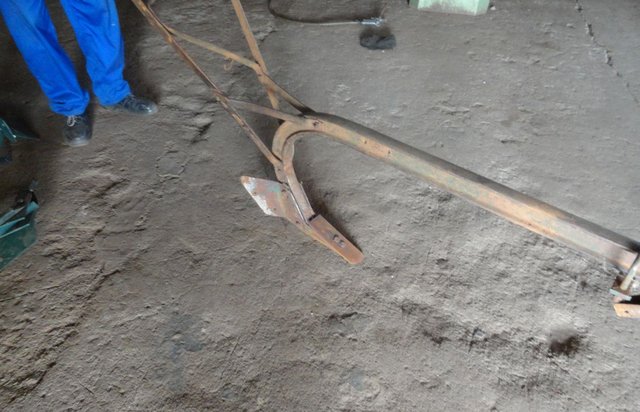
Conservation Tillage with Magoye Ripper [赞比亚]
Conservation Tillage with the Magoye Ripper is an animal draft reduced tillage method that involves the use of the Magoye Ripper to loosen the soil by shattering with a tine instead of ploughing.
- 编制者: Silenga Wamunyima
2. SLM方法的描述
2.1 该方法的简要说明
This is a collaborative process between researchers and farmers for developing and adapting new technologies that focus on incorporating the perspectives and inputs from the farmers into the development process.
2.2 该方法的详细说明
该方法的详细说明:
Aims / objectives: (1)To stimulate active farmer participation in the technology development process so that local conditions and perspectives are integrated in the process. (2)Build the capacity of farmers to identify problems and contribute to selecting/improving technology options. (3) Raise farmers’ yields in a sustainable manner and ultimately contribute to increased net farm income.
Methods: A series of on-farm experiments are set up to test a range of technology options. These trials are implemented by the farmers so that vital feedback on which technology works and why it does so is collected. Suggestions for improvements are also collected, reviewed and incorporated into new designs or all together new technologies developed. The process is repeated until spontaneous adoption is evident before the technologies are promoted widely.
Stages of implementation: (1) Preparation of trial protocols for technologies to be tested (2) Identification of farmers and mobilization into farmer groups (3) Capacity building and increasing the knowledge base of farmers to effectively participate and contribute to development process. (4) Setting up of on-farm trials (5) Monitoring trials and collecting data/feedback from farmers (6) incorporation of feedback into technology development process and conducting on-station trials (7) technologies adapted or developed and introduced and the process is repeated.
Role of stakeholders: The approach was designed by national specialists where ‘best-bet’ technologies were pre-selected for testing. The role of GART was that of research and training of trainers. The supervision of the farmers was carried out by government extension workers who were supervised by the researchers and GART field technicians. The farmers implemented the approach and the decision on which technology to adopt was made by them. The land users also participated in evaluating the technologies and made suggestions on possible improvements. The decision on how best to consolidate these suggestions and incorporate them into the technologies was made by the specialists in consultation with the land users.
2.3 该方法的照片
2.5 采用该方法的国家/地区/地点
国家:
赞比亚
区域/州/省:
Zambia
有关地点的进一步说明:
Mazabuka/Magoye
Map
×2.6 该方法的开始和终止日期
注明开始年份:
1995
2.7 方法的类型
- 基于项目/方案
2.8 该方法的主要目的/目标
The Approach focused mainly on SLM with other activities (Increasing agricultural productivity, improving livelihoods )
(1)To stimulate active farmer participation in the technology development process so that local conditions and perspectives are integrated in the process. (2)Build the capacity of farmers to identify problems and contribute to selecting/improving technology options. (3) Raise farmers’ yields in a sustainable manner through technology innovation and ultimately contribute to increased net farm income.
The SLM Approach addressed the following problems: Unsustainable farming practices leading to environmental degradation and low agricultural productivity
2.9 推动或妨碍实施本办法所适用的技术的条件
社会/文化/宗教规范和价值观
- 阻碍
The participation of women not as much as that of men
Treatment through the SLM Approach: Women headed households were identified and targeting for inclusion in the project
财务资源和服务的可用性/可得性
- 阻碍
The short cycle of projects and funding that made long-term planning difficult
Treatment through the SLM Approach: Collaborate with government structures and extension service to ensure sustainability of the project
机构设置
- 阻碍
Weak collaboration between organizations promoting conservation agriculture (CA) leading to mixed messages being delivered to farmers
Treatment through the SLM Approach: Formation of the Conservation Farming Association (CAA) to synchronise messages and avoid duplication of efforts
法律框架(土地使用权、土地和水使用权)
- 阻碍
Lack of secure land tenure leading to hesitancy to invest in long-term conservation efforts
Treatment through the SLM Approach: Emphasise the short-term benefits of conservation
The existing land ownership, land use rights / water rights moderately hindered the approach implementation Lack of secure land tenure discourages land user from seeking long-term conservation efforts
了解SLM,获得技术支持
- 阻碍
The failure of rural workshops to produce and supply the necessary equipment for the implementation of the approach
Treatment through the SLM Approach: Collaboration was initiated with mainstream equipment suppliers
其他
- 阻碍
Low returns from the sale of the staple crop (maize) and hence low returns to farming general
Treatment through the SLM Approach: Encourage crop livestock integration and promote crop diversification
3. 相关利益相关者的参与和角色
3.1 该方法涉及的利益相关者及其职责
- 当地土地使用者/当地社区
Community based organizations for HIV/AIDS affected people
Most of the households are male headed. of the 250 farmers registered in Magoye, only 22 were female headed.
- SLM专家/农业顾问
Researchers and government extension
- 研究人员
Researchers and government extension
- 国家政府(规划者、决策者)
Government extension implemented the approach after training from GART. Politicians were lobbied to mainstream CA in govt programmes
GART, the main implementing body is a quasi-government body
3.2 当地土地使用者/当地社区参与该方法的不同阶段
| 当地土地使用者/当地社区的参与 | 指定参与人员并描述活动 | |
|---|---|---|
| 启动/动机 | 互动 | Approach inititated by specialists based on interactions with land-users from previous programmes |
| 计划 | 被动 | Planning was done by specialists although farmers were informed and consulted at every stage |
| 实施 | 互动 | Land users implemented the approach with the help of specialists |
| 监测/评估 | 被动 | Monitoring/evaluation was done by the specialists together with the land users as well as external evaluators |
| Research | 互动 | Research was done by the specialists together with the land users |
3.3 流程图(如可用)
具体说明:
Golden Valley Agricultural Research Trust (GART) is an autonomous and self-sustaining
Public Private Partnership organization in 1993 created by the Government of Zambia and the Zambia National Farmers Union GART is member of the Zambia National Farmers Union (ZNFU).
作者:
Silenga Wamunyima (Mazabuka/Southern Province/Zambia)
3.4 有关SLM技术选择的决策
具体说明谁有权决定选择要实施的技术:
- 主要是土地使用者,由SLM专家提供支持
解释:
The choice of which technology to test was made by the specialist but the choice of which technology to implement was made by the land users
Decisions on the method of implementing the SLM Technology were made by mainly by land users supported by SLM specialists
4. 技术支持、能力建设和知识管理
4.1 能力建设/培训
是否为土地使用者/其他利益相关者提供培训?:
是
明确受训人员:
- 土地使用者
- 现场工作人员/顾问
培训形式:
- 农民对农民
- 示范区域
- 公开会议
涵盖的主题:
soil conservation and soil fertility improvement, how to use the conservation agricultural technologies, crop-livestock integration
4.2 咨询服务
土地使用者有权使用咨询服务吗?:
是
指明是否提供了咨询服务:
- 在土地使用者的土地上
说明/注释:
Name of method used for advisory service: Training of Trainers; Key elements: trainig of goverment extension workers and NGOs promoting of conservation agriculture (CA), on-farm demonstrations, field days
Advisory service is inadequate to ensure the continuation of land conservation activities; There are too few extension workers and there aren’t sufficient training manuals
4.3 机构强化(组织发展)
是否通过这种方法建立或加强了机构?:
- 是,适度
具体说明机构的强化或建立程度:
- 本地
具体说明支持类型:
- 能力建设/培训
- 设备
提供进一步细节:
Capacity building of local cooperatives and farmer associations, training of trainers and practical demonstrations
4.4 监测和评估
监测和评估是该方法的一部分吗?:
是
注释:
bio-physical aspects were regular monitored by project staff, land users through observations; indicators: Soil properties, moisture conservation
bio-physical aspects were ad hoc monitored by project staff through measurements; indicators: soil miosture, soil fertility
technical aspects were regular monitored by project staff through observations; indicators: Yield, production area, labour, timeliness
technical aspects were None monitored by project staff through measurements; indicators: equipment breakdowns
socio-cultural aspects were None monitored by project staff through observations; indicators: Gender, mindset, status
economic / production aspects were None monitored through observations; indicators: Yields, labour inputs, costs, income, adoption
no. of land users involved aspects were monitored through observations
There were several changes in the Approach as a result of monitoring and evaluation: There was more emphasis on on-farm trials as the project went on with more training on weeding techniques and crop-livestock integration
There were several changes in the Technology as a result of monitoring and evaluation: The Magoye Ripper (T_ZAM003en) was modified to penetrate deeper and an altogether new technology called the Magoye Planter (Strip Tillage T_ZAM002en) was developed to overcome some of the constraints of the Magoye Ripper.
4.5 研究
研究是该方法的一部分吗?
是
明确话题:
- 技术
提供进一步的细节,并指出是谁做的研究:
Research by GART focused on equipment development and adaptation of soil improvement technologies to make Conservation Agriculture (CA) a viable option for animal draft farmers
Research was carried out both on station and on-farm
5. 融资和外部物质支持
5.1 该方法中SLM组成部分的年度预算
如果不知道准确的年度预算,请给出一个范围:
- 2,000-10,000
注释(例如主要的资助来源/主要捐助者):
Approach costs were met by the following donors: local community / land user(s) (Land preparation by land user(s)): 100.0%
5.2 为土地使用者提供财政/物质支援
土地使用者是否获得实施该技术的财政/物质支持?:
是
如果是,请具体说明支持的类型、条件和提供者:
Mostly contributions from EU supplemented by finances from commercial activities i.e. commercial crop production and contract research
5.3 对特定投入的补贴(包括劳动力)
- 设备
| 具体说明哪些投入得到了补贴 | 程度如何 | 对补贴做出具体说明 |
|---|---|---|
| 工具 | 部分融资 | |
如果土地使用者的劳动力是一项重要的投入,那么是不是:
- 自愿
注释:
GART only provided technical support while the farmer provided all the inputs, labour
5.4 信用
是否根据SLM活动的方法给予信用值?:
否
6. 影响分析和结论性陈述
6.1 方法的影响
该方法是否帮助土地使用者实施和维护SLM技术?:
- 否
- 是,很少
- 是,中等
- 是,支持力度很大
The farmers that adopted the Magoye Ripper were ploughing (pulverising) less thereby reducing erosion and loss of organic matter. However, some of the technologies have not been adopted on a wide enough scale to create an impact at community level. Even the farmers that did not adopt the technologies are now more aware of the need for soil conservation.
该方法是否有助于社会和经济弱势群体?:
- 否
- 是,很少
- 是,中等
- 是,支持力度很大
HIV/AIDS affected families and female headed households were specifically targeted
该方法是否改善了阻碍SLM技术实施的土地使用权/用户权问题?:
- 否
- 是,很少
- 是,中等
- 是,支持力度很大
Apart from lobbying policy makers, issues of land tenure were beyond the scope of the approach The problem is likely to be overcome in the near future. The problem has been acknowledged by politicians and addressed in the new draft constitution
Did other land users / projects adopt the Approach?
- 否
- 是,很少
- 是,中等
- 是,支持力度很大
On-farm research has been adopted by the Conservation Farming Unit (CFU) who are the biggest player in promotion of Conservation Agriculture in Zambia. There are not many other research organizations in Zambia
Did the Approach lead to improved livelihoods / human well-being?
- 否
- 是,很少
- 是,中等
- 是,支持力度很大
Increased income and improved food security, less labour constraints and more time for other economic activities
Did the Approach help to alleviate poverty?
- 否
- 是,很少
- 是,中等
- 是,支持力度很大
Increased income and improved food security, less labour constraints and more time for other economic activities
6.2 土地使用者实施SLM的主要动机
- 增加生产
- 增加利润(能力),提高成本效益比
- 减少工作量
- 环境意识
6.3 方法活动的可持续性
土地使用者能否维持通过该方法实施的措施(无外部支持的情况下)?:
- 是
若是,请说明如何维持:
Adoption rates for Conservation Agriculture are still fairly low indicating that the practice is still fairly new and the technologies still need to be adapted and refined to suit local conditions. The farmers still need technical support until the bottlenecks with the practices are addressed and there is evident spontaneous adoption. This all depends on how well research and planners respond to the current challenges.
6.4 该方法的长处/优点
| 土地使用者眼中的长处/优势/机会 |
|---|
| Farmers well informed of current developments and technology advancements (How to sustain/ enhance this strength: Training farmers on current developments and technology advancements) |
| 编制者或其他关键资源人员认为的长处/优势/机会 |
|---|
| Farmers organizations strengthened (How to sustain/ enhance this strength: Capacity building) |
|
There is strong farmer involvement in technology adaptation (How to sustain/ enhance this strength: Increase the farmers knowledge base to ensure effective participation) |
6.5 该方法的弱点/缺点以及克服它们的方法
| 编制者或其他关键资源人员认为的弱点/缺点/风险 | 如何克服它们? |
|---|---|
| Too little emphasis on knowledge transfer and too much on practical demonstrations and ‘how-to’ training. |
Focus more on understanding principles and technology selection |
7. 参考和链接
7.1 方法/信息来源
- 实地考察、实地调查
- 与土地使用者的访谈
7.2 参考可用出版物
标题、作者、年份、ISBN:
Impact study on the acceptance of the Magoye Ripper, Piet Stevens, David Samazaka, Ab Wanders, Douglas Moono, 2002 Conservation farming in Zambia, Steven Haggblade, Gelson Tembo, October 2003 Social-economic analysis of conservation agriculture in southern Africa, FAO, 2011Conservation farming in Zambia, Conservation farming unit (CFU), 2011
可以从哪里获得?成本如何?
GART/free onlineINDABA Project, Michigan State University/free onlineFAO/free onlinecfu@zamnet.zm
标题、作者、年份、ISBN:
Conservation farming in Zambia, Steven Haggblade, Gelson Tembo, October 2003
可以从哪里获得?成本如何?
INDABA Project, Michigan State University/free online
标题、作者、年份、ISBN:
Social-economic analysis of conservation agriculture in southern Africa, FAO, 2011
可以从哪里获得?成本如何?
FAO/free online
标题、作者、年份、ISBN:
Conservation farming in Zambia, Conservation farming unit (CFU), 2011
可以从哪里获得?成本如何?
cfu@zamnet.zm
链接和模块
全部展开 全部收起链接

Animal Draft Zero-Tillage [赞比亚]
Animal draft zero-till involves the use of an animal drawn mechanical planter to plant directly in untilled soil to minimize soil disturbance and leave a cover of crop residues to conserve the soil and water.
- 编制者: Silenga Wamunyima

Strip Tillage Conservation Farming [赞比亚]
Strip Tillage Conservation Farming is an animal draft reduced tillage method that involves loosening a strip of soil with a strip tillage tool so as to reduce soil disturbance and improve soil and water conservation.
- 编制者: Silenga Wamunyima

Conservation Tillage with Magoye Ripper [赞比亚]
Conservation Tillage with the Magoye Ripper is an animal draft reduced tillage method that involves the use of the Magoye Ripper to loosen the soil by shattering with a tine instead of ploughing.
- 编制者: Silenga Wamunyima
模块
无模块


